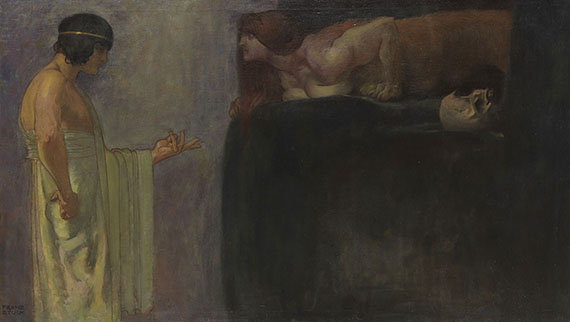Dictionary


Scottish Colourists
Scottish Colourists were a group of Scottish painters active between 1900/10 and 1930. The term was first used by the author T. J. Honeyman in reference to George Leslie Hunter (1877-1931), Samuel John Peploe (1871-1935) und Francis Campbell Boileau Cadell (1883-1937), and later John Duncan Fergusson (1874-1961), who became the key figure in the group.
The Scottish Colourists’ work was already in great demand during the group’s lifetime. Following an exhibition in Paris in 1931, the French government purchased paintings from George Leslie Hunter, Samuel John Peploe and John Duncan Fergusson. The Scottish Colourists was the successor to the Glasgow Boys and the artists embraced and developed the latter’s free style and spontaneous colours. They were also influenced by trips abroad. All four of the Scottish Colourists visited Paris, where they came into contact with avant-garde styles, and were particularly inspired by Post-Impressionism and the intensive, expressive colourfulness of Fauvism. The group adapted the French modernists’ ideas in their own way, painting Scottish landscapes, views of Iona island, exotic still-life, portraits and figurative scenes which remained rational in form and distinctive in their materiality. The colours were characterised by an atmospheric density and a level of expressive spontaneity, which more than justified the name "Colourists" for the four Scotsmen.
Scottish Colourists were a group of Scottish painters active between 1900/10 and 1930. The term was first used by the author T. J. Honeyman in reference to George Leslie Hunter (1877-1931), Samuel John Peploe (1871-1935) und Francis Campbell Boileau Cadell (1883-1937), and later John Duncan Fergusson (1874-1961), who became the key figure in the group.
The Scottish Colourists’ work was already in great demand during the group’s lifetime. Following an exhibition in Paris in 1931, the French government purchased paintings from George Leslie Hunter, Samuel John Peploe and John Duncan Fergusson. The Scottish Colourists was the successor to the Glasgow Boys and the artists embraced and developed the latter’s free style and spontaneous colours. They were also influenced by trips abroad. All four of the Scottish Colourists visited Paris, where they came into contact with avant-garde styles, and were particularly inspired by Post-Impressionism and the intensive, expressive colourfulness of Fauvism. The group adapted the French modernists’ ideas in their own way, painting Scottish landscapes, views of Iona island, exotic still-life, portraits and figurative scenes which remained rational in form and distinctive in their materiality. The colours were characterised by an atmospheric density and a level of expressive spontaneity, which more than justified the name "Colourists" for the four Scotsmen.
Offers
Headquarters
Joseph-Wild-Str. 18
81829 Munich
Phone: +49 89 55 244-0
Fax: +49 89 55 244-177
info@kettererkunst.de
Louisa von Saucken / Undine Schleifer
Holstenwall 5
20355 Hamburg
Phone: +49 40 37 49 61-0
Fax: +49 40 37 49 61-66
infohamburg@kettererkunst.de
Dr. Simone Wiechers / Nane Schlage
Fasanenstr. 70
10719 Berlin
Phone: +49 30 88 67 53-63
Fax: +49 30 88 67 56-43
infoberlin@kettererkunst.de
Cordula Lichtenberg
Gertrudenstraße 24-28
50667 Cologne
Phone: +49 221 510 908-15
infokoeln@kettererkunst.de
Hessen
Rhineland-Palatinate
Miriam Heß
Phone: +49 62 21 58 80-038
Fax: +49 62 21 58 80-595
infoheidelberg@kettererkunst.de
We will inform you in time.




